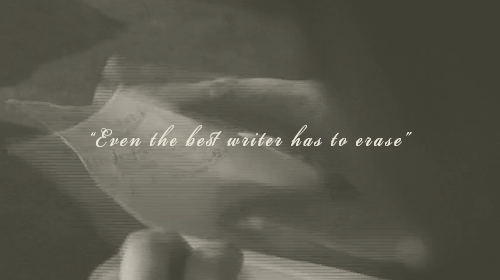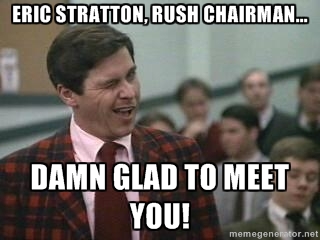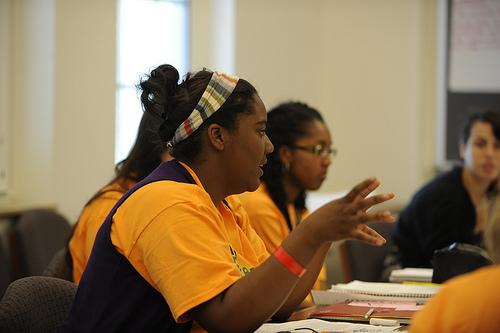
While some of us take pride in being able to read and write in prose thick with jargon and layers of stylistic complexity, others are more vocal about feeling like I’ve often felt. The late Denis Dutton’s brief annual series The Bad Writing Contest took aim at these conventions of academic prose and brought them to broader attention.
“As usual,” commented Denis Dutton, editor of Philosophy and Literature, “this year’s winners were produced by well-known, highly-paid experts who have no doubt labored for years to write like this. That these scholars must know what they are doing is indicated by the fact that the winning entries were all published by distinguished presses and academic journals.”Professor Butler’s first-prize sentence appears in “Further Reflections on the Conversations of Our Time,” an article in the scholarly journal Diacritics (1997):
The move from a structuralist account in which capital is understood to structure social relations in relatively homologous ways to a view of hegemony in which power relations are subject to repetition, convergence, and rearticulation brought the question of temporality into the thinking of structure, and marked a shift from a form of Althusserian theory that takes structural totalities as theoretical objects to one in which the insights into the contingent possibility of structure inaugurate a renewed conception of hegemony as bound up with the contingent sites and strategies of the rearticulation of power.
Dutton remarked that “it’s possibly the anxiety-inducing obscurity of such writing that has led Professor Warren Hedges of Southern Oregon University to praise Judith Butler as ‘probably one of the ten smartest people on the planet’.”
There are any number of reasons why academic writing can feel laborious, impenetrable, and intimidating to readers — and it’s often not the case that the reason is the intellectual inferiority of the reader. Indeed, as Harvard University’s Steven Pinker points out in the Chronicle of Higher Education last week, several factors leading to problematic academic writing style might be located at the intellectual anxiety of the writer:
- self-consciousness: the writer’s worry that they will be perceived by others as intellectually illegitimate in their field;
- the “curse of knowledge”: the writer’s inability to recognize the possibility that other people may not know what they know.
Even the venerated literary critic Jacques Derrida has shared that he experiences feelings of fear and intimidation when engaged in critical scholarly writing:
Pinker’s essay is a thoughtful, useful examination of why our writing often takes the forms it does at its worst — useful for us as academic writers, and useful for us to share with our students as we attempt to guide them into the kind of writing that helps them enter an intellectual conversation with fellow experts.
_____________________________________________________________
September 26, 2014
Why Academics Stink at Writing

Scott Seymour
Together with wearing earth tones, driving Priuses, and having a foreign policy, the most conspicuous trait of the American professoriate may be the prose style called academese. An editorial cartoon by Tom Toles shows a bearded academic at his desk offering the following explanation of why SAT verbal scores are at an all-time low: “Incomplete implementation of strategized programmatics designated to maximize acquisition of awareness and utilization of communications skills pursuant to standardized review and assessment of languaginal development.” In a similar vein, Bill Watterson has the 6-year-old Calvin titling his homework assignment “The Dynamics of Interbeing and Monological Imperatives in Dick and Jane: A Study in Psychic Transrelational Gender Modes,” and exclaiming to Hobbes, his tiger companion, “Academia, here I come!”
No honest professor can deny that there’s something to the stereotype. When the late Denis Dutton (founder of the Chronicle-owned Arts & Letters Daily) ran an annual Bad Writing Contest to celebrate “the most stylistically lamentable passages found in scholarly books and articles,” he had no shortage of nominations, and he awarded the prizes to some of academe’s leading lights.
But the familiarity of bad academic writing raises a puzzle. Why should a profession that trades in words and dedicates itself to the transmission of knowledge so often turn out prose that is turgid, soggy, wooden, bloated, clumsy, obscure, unpleasant to read, and impossible to understand?




 Yesterday I got an email from a faculty member who had just received her spring semester student ratings (yes, in August, but that’s a topic for another post). She’d gotten one of those blistering student comments. “This teacher should not be paid. We had to teach ourselves in this course.” I remember another faculty member telling me about similar feedback, which was followed later with a comment about how the course “really made me think.”
Yesterday I got an email from a faculty member who had just received her spring semester student ratings (yes, in August, but that’s a topic for another post). She’d gotten one of those blistering student comments. “This teacher should not be paid. We had to teach ourselves in this course.” I remember another faculty member telling me about similar feedback, which was followed later with a comment about how the course “really made me think.”




